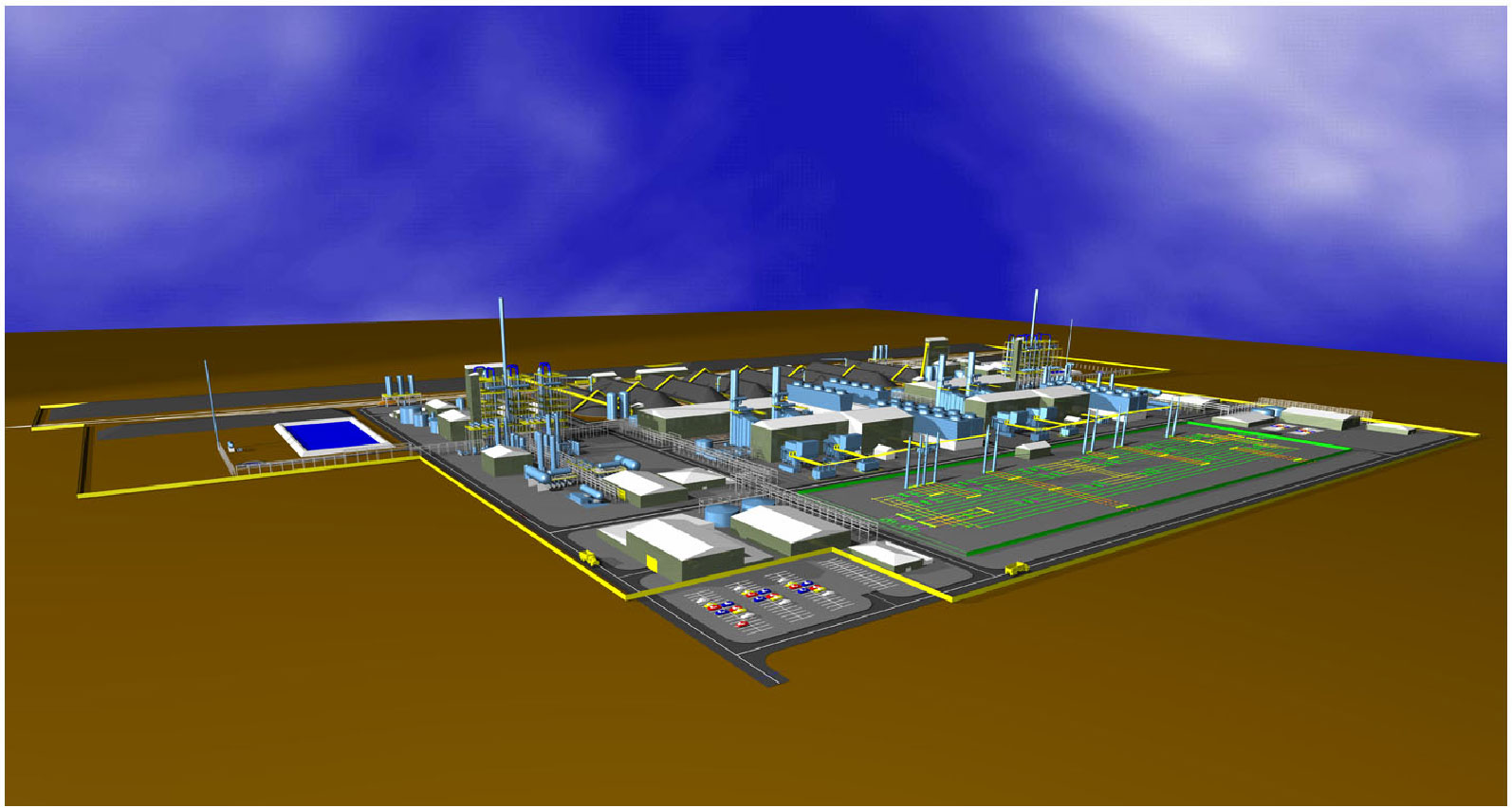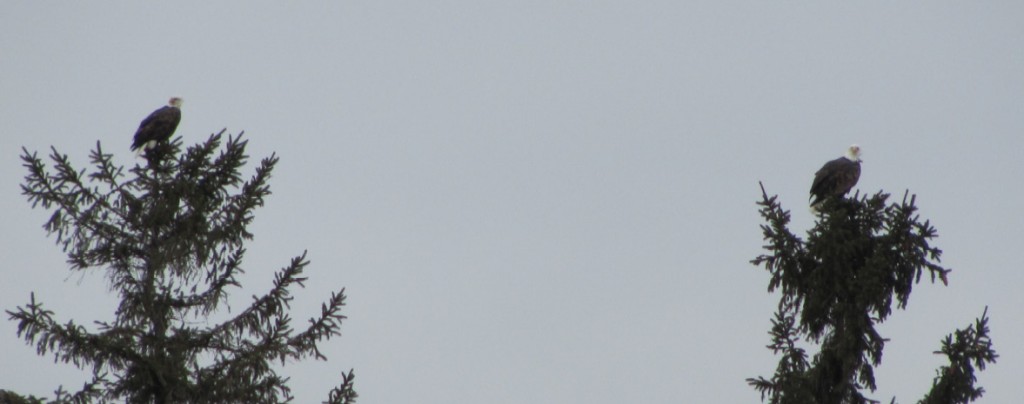Mesaba is baaaaaack!
June 11th, 2012
Excelsior Energy’s Mesaba Project has raised its ugly head again. There were rumors for a long time that Micheletti wanted to change it to a natural gas plant. Then they went to the legislature and got the “incentives” for their boondoggle “clean coal” plant, the “innovative technology” that doesn’t work… they went to the MPCA and their air permit was AGAIN rejected as incomplete, and now they’ve gone to the PUC, requesting confirmation that the permits they have are valid. Oh, PUH-LEEZE!
Here we go again…
mncoalgasplant.com will be filing comments, no doubt about it!
Would the PUC doesn’t transfer projects like this without amending the permit application, without verification of what indeed it is they want to do? If you take the original ALJ Decision, the Permit Order and the Permit itself, redact everything related to coal gasification, what’s left? Not much! We need to know what they’re planning (if anything, this remains the vaporware project from hell).
This is the letter filed by Excelsior Energy — I don’t recall having received it, but will dig through the piles here, they DO have my correct address (though I note that they sent to Excelsior’s Evans, Greenman and Harrington at their OLD address!):
Here is the PUC’s Notice of Comment Period, first round due June 29, 2012:
And what’s most disturbing is the legislative change in 2011, supported, DEMANDED, by Gov. Dayton:
Subd. 3. Staging and permitting.
(a) A natural gas-fired plant that is located on one site designated as an innovative energy project site under subdivision 1, clause (3), is accorded the regulatory incentives granted to an innovative energy project under subdivision 2, clauses (1) to (3), and may exercise the authorities therein.
(b) Following issuance of a final state or federal environmental impact statement for an innovative energy project that was a subject of contested case proceedings before an administrative law judge:
(1) site and route permits and water appropriation approvals for an innovative energy project must also be deemed valid for a plant meeting the requirements of paragraph (a) and shall remain valid until the earlier of (i) four years from the date the final required state or federal preconstruction permit is issued or (ii) June 30, 2019; and
(2) no air, water, or other permit issued by a state agency that is necessary for constructing an innovative energy project may be the subject of contested case hearings, notwithstanding Minnesota Rules, parts 7000.1750 to 7000.2200.
Here’s the link to the full Minn. Stat. 216B.1694.
Tomorrow – wind appellate arguments
April 24th, 2012
Tomorrow is the day — oral arguments of the appeal of the Public Utility Commission’s Order granting AWA Goodhue a permit.
Arguments are scheduled for 11:15 a.m. in Room 100 at the Minnesota Judicial Center, 25 Martin Luther King Jr. Blvd., St. Paul.
I don’t have electronic copies of the Public Utilities Commission and AWA Goodhue briefs, here’s what I do have:
Coalition for Sensible Siting – Initial Brief
There’s a lot at stake here, primarily local control — whether a county can regulate a wind project. Under the Power Plant Siting Act (PPSA), local governments are typically pre-empted from regulating utility projects, except in a few narrow cases, for example power plants and transmission where the project applicant chooses local review having met the criteria set forth in Minn. Stat. 216E.05. Another way local governments have a say in regulating utility infrastructure is through a legislative tax exemption under Minn. Stat. 272.02 and Host Fee Agreement in lieu of Utility Personal Property Tax, where the legislative mandate and the Host Fee Agreement can include non-tax material terms. Neither of these options are available to wind projects or local governments wishing to regulate wind projects.
HOWEVER, the legislature did pass this gem — note “shall” in the language:
And this is what this appeal is about – whether the Public Utilities Commission had good cause not to apply the standards, because where they do not have good cause, they SHALL apply the county standards.
We’ll see how it goes tomorrow…
PUC Order denying AWA Goodhue ABPP
April 16th, 2012
“Double Trouble” taken by Marie McNamara on her organic dairy farm within the AWA Goodhue project footprint.
I know, too much alphabet soup in the title… but the Public Utilities Commission (PUC) issued the Order denying the AWA Goodhue Avian and Bat Protection Plan week before last, and I’ve been drowning in CapX and didn’t get it posted, so…
The DNR and USFWS wrote blisteringly negative comments, like nothing I’ve ever seen before, and AWA revised their plan, but not enough. This was the scenario where Commerce wrote staff briefing papers for the Commission and didn’t even tell them about the agency comments, and didn’t update their “recommendation” even after the meeting had been cancelled twice for their failure to allow time for comments on the Revised Plan and failure to disclose DNR and USFWS comments and then rescheduled yet again for the PUC’s failure to provide legal notice of the meeting, an amazing series of screw-ups. Finally, the PUC meeting was held, it lasted almost all day, and they rejected it.
HERE IS THE PUC’s ORDER:
AWA Goodhue did NOT expect this, that was obvious. The PUC was pretty clear that AWA had not complied, that “good enough” just wasn’t.
The Commission, too, is concerned about the extent of missing bat data because collecting a full season of data prior to construction would enable the parties and the agencies to make determinations as accurately as possible about the presence of bat species. That process has been severely compromised, and the permit condition was not met. The Commission will therefore direct AWA Goodhue to complete the acoustic bat monitoring required under the site permit and to conduct an additional season of monitoring in 2013.
And trumpeter swans! They’re paying attention to trumpeter swans!
In August 2011, the DNR confirmed a report of trumpeter swans nesting within a two mile buffer of the Project’s footprint. AWA Goodhue stated that it will visit the nest site early in the 2012 breeding season to determine whether it is again used for nesting. AWA Goodhue also stated, however, that the Project area encompasses very little habitat potentially suitable for nesting by trumpeter swans. The DNR stated that swans are not likely to move substantially during the breeding season and that monitoring should be conducted during the breeding season, summer post fledging, and fall migration.
The Commission must ensure that the potential impacts to trumpeter swans, which were previously considered eliminated in Minnesota, are understood and addressed. The Commission concurs that future monitoring will be useful in making those determinations.
DNR’s Non-Game Wildlife – Trumpeter Swan page
Bottom line? Here ’tis:
ORDER
1. The Commission hereby denies approval of the AWA Goodhue revised avian and bat protection plan.
2. AWA Goodhue shall conduct the bat monitoring required under the site permit.
3. AWA Goodhue shall conduct an additional season of acoustic bat monitoring in 2013 from July 1 to October 15 using the methods specified in site permit condition 13.1.2.
PUC says NO! to AWA Goodhue Avian & Bat Protection Plan
February 23rd, 2012
.
WOW, it has been a wild week… a wild day. At 11:58 a.m. today the Minnesota Court of Appeals said that Goodhue Wind Truth could file an Amicus Brief. For nearly four years now, I’ve represented Goodhue Wind Truth in its battle for siting standards protective of neighbors of wind projects, their farms, in this case their organic dairy farm, and it seems that the many bald eagles and a few golden eagles command more attention than the many people subjected to wind turbines too close to their homes.
Double WOW, the Public Utilities Commission said that AWA Goodhue has to go back to the drawing board and redo its Avian and Bat Protection Plan.
And in the STrib:
Bald eagles win a round against wind farm
Wind turbines won’t sprout near Red Wing for at least a year, state regulators decide.
The contentious 2 1/2-hour hearing was a reflection of the emerging conflict between the demand for clean energy and a growing realization that when wind farms are in the wrong place they can kill hundreds of thousands of birds and bats a year.
The controversy over the small wind farm near Red Wing has drawn national attention from conservation groups concerned about the design and placement of wind farms.
“This is one of the hottest fights in the nation,” said Kelly Fuller, wind campaign coordinator for the American Bird Conservancy.
Goodhue Wind has recently conceded that the project would probably harm an unknown number of eagles, and has started an application for a federal permit that would legally allow it to kill the birds. The permit is a new strategy by the U.S. Fish and Wildlife Service to manage the often-lethal conflict between birds and turbine blades. Only one other wind project has applied — West Butte Power Project in Oregon — but no permits have been granted.
The decision to develop such permits is controversial among environmental and bird conservation groups. “The public cares deeply about bald eagles,” said Fuller. “I’ve never met anyone who thinks it’s a good idea to kill bald eagles. They are special birds.”
Even the utilities commissioners expressed some discomfort with the idea at Thursday’s hearing. Commissioner J. Dennis O’Brien called it “a license to kill.”
“Every fall I apply for a duck hunting license,” O’Brien said. “You will have a license to kill up to a specified number of eagles.”
Commissioner Betsy Wergin asked the company’s attorney how the number of eagle nests in their site survey could multiply so quickly since it first proposed the project.
“At the outset I recall one nest within a mile of the project,” Wergin said. “Now there are six. With the proliferation of eagles, do you think you will be allowed to get a permit?”
“We have seen more nests,” said Christy Brusven, the company’s attorney. “The eagle population is an American success story.”
But citizens who testified said that they believe the company had deliberately avoided conducting accurate surveys. They showed maps of the site footprint and the 10-mile radius around it with a dozen or more eagle nests, some of which were confirmed by state wildlife officials.
They also criticized the company’s bat monitoring survey. Brusven said the technology used to record bat calls failed about half of the time during the survey period, and as a result the count was inaccurate. She said the company would continue to monitor bats during construction.
But the commissioners said instead that they want the company to first do the survey research on bats and birds, and coordinate with the U.S. Fish and Wildlife Service on the federal permit. Then, they said, the company could re-apply in about a year.
The project faces obstacles on another front, as well. The citizens group has asked the Minnesota Court of Appeals to review an earlier decision by the PUC on setback rules. The commission overruled a Goodhue County ordinance that would have required the company to place turbines at least 2,700 feet from neighboring property lines.
Now, the appeals court will determine if the state has the right to overrule local governments on land use.
“This is a very important case,” said Daniel Schleck, the attorney representing the citizens group opposing the wind farm. “It’s an open-ended question on whether the state has the power.”
Goodhue Wind Truth granted leave to file Amicus brief!
February 23rd, 2012
YEAAAAAAAAAA!
The Minnesota Appellate Court has granted Goodhue Wind Truth leave to file an Amicus brief. We’ve got to narrow it down, but it’s been granted:
Order Granting Amicus and Expedited Argument and Disposition
Here are the specifics:
2. The motion for leave to participate as amicus curiaeis granted. As a condition of that participation, Goodhue Wind Truth shall serve and file an amended amicus brief by February 29. 2012. The brief may be served and filed by mail, but if served by mail, a copy shall also be provided electronically (by facsimile or e-mail) to all counsel, to ensure that respondents receive that brief no later than 5 p.m. on February 29, 2012. The amended brief shall not raise legal issues beyond those identified in relator’s brief (including the issue relating to siting standards included in Part II of the proffered brief) and shall not seek relief beyond the scope of this certiorari appeal.
Hey, we can do that! With pleasure!!!



